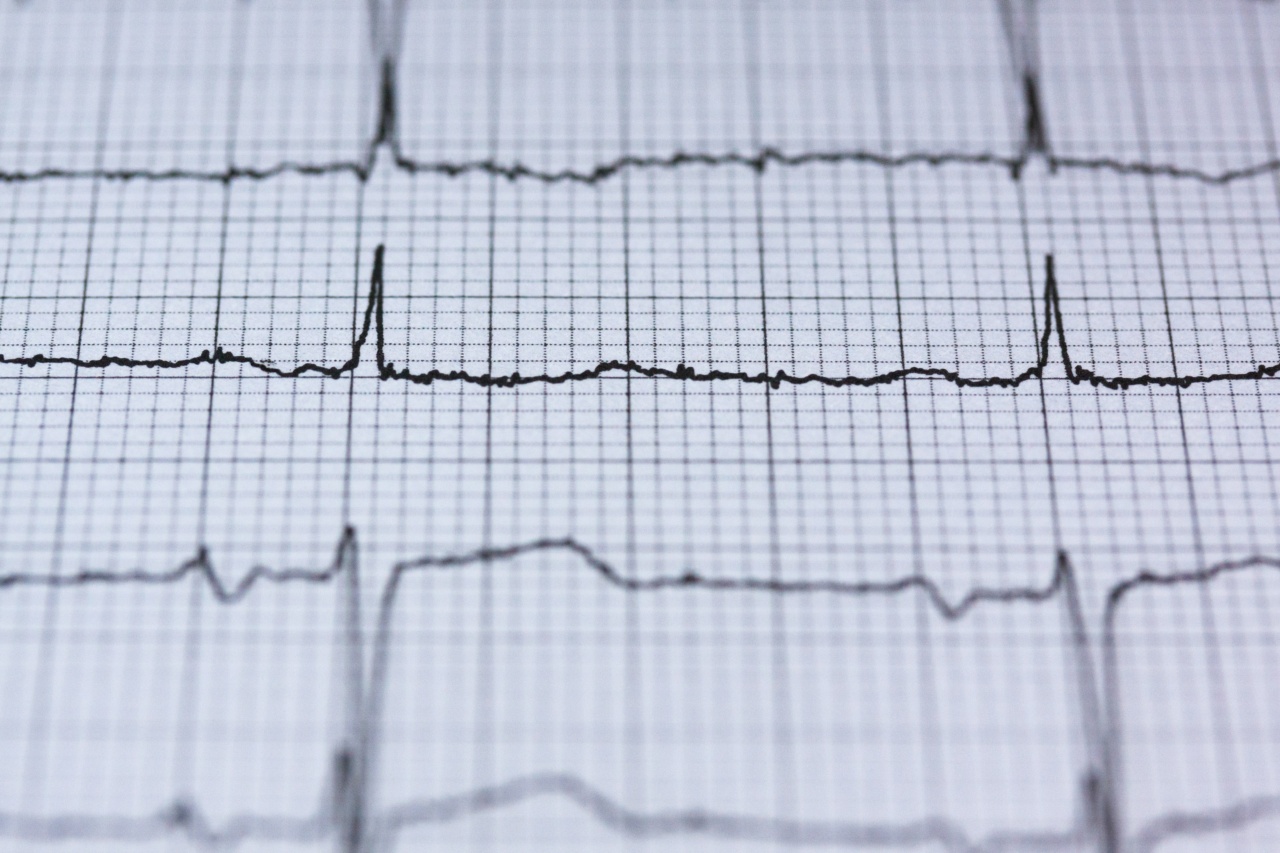When a person experiences a heart attack, it can have long-lasting effects on their heart function. In some cases, individuals may develop post-heart attack heart rhythm anomalies.
These anomalies refer to irregularities in the heartbeat pattern or rhythm that occur after a heart attack. Understanding these anomalies is crucial for proper diagnosis, treatment, and management of patients who have experienced a heart attack.
In this article, we will explore the different types of post-heart attack heart rhythm anomalies, their causes, symptoms, diagnosis, and treatment options.
Types of Post-Heart Attack Heart Rhythm Anomalies
There are several types of heart rhythm anomalies that can occur following a heart attack:.
1. Ventricular Tachycardia (VT)
Ventricular tachycardia is a condition characterized by rapid, abnormal heartbeats that originate in the ventricles, the lower chambers of the heart. It can be life-threatening and requires immediate medical attention.
2. Ventricular Fibrillation (VF)
Ventricular fibrillation occurs when the heart’s electrical signals become chaotic, causing the ventricles to quiver or “fibrillate” instead of pumping blood effectively.
This condition requires immediate defibrillation to restore a normal heart rhythm.
3. Bradyarrhythmias
Bradyarrhythmias include abnormally slow heart rhythms, such as sinus bradycardia, heart block, and atrioventricular (AV) block. These conditions can lead to a decreased supply of oxygenated blood to the body and may require a pacemaker for treatment.
4. Supraventricular Tachycardia (SVT)
Supraventricular tachycardia is a condition where the heart’s electrical signals are abnormally fast and originate above the ventricles. It can cause palpitations, chest discomfort, and shortness of breath.
5. Premature Ventricular Contractions (PVCs)
Premature ventricular contractions are extra, abnormal heartbeats that originate in the ventricles. While they are common and usually harmless, frequent PVCs may require further evaluation.
Causes of Post-Heart Attack Heart Rhythm Anomalies
Several factors contribute to the development of heart rhythm anomalies after a heart attack:.
1. Myocardial Scar Tissue
When a heart attack occurs, a portion of the heart muscle dies due to lack of blood flow. The scar tissue that forms in place of the damaged muscle can disrupt the normal electrical signals in the heart, leading to rhythm anomalies.
2. Ischemia
Persistent or recurrent episodes of reduced blood flow to the heart, known as ischemia, can contribute to the onset of rhythm anomalies. Ischemia may occur due to narrowed or blocked coronary arteries.
3. Inflammation
Inflammation resulting from the heart attack can affect the electrical system of the heart, leading to abnormal heart rhythms.
4. Medications
Certain medications used to manage heart attack patients, such as beta-blockers or antiarrhythmic drugs, may inadvertently cause or worsen heart rhythm anomalies.
Symptoms and Diagnosis
The symptoms of post-heart attack heart rhythm anomalies vary depending on the type and severity of the abnormal rhythm. Common symptoms include:.
1. Palpitations
A sensation of fluttering or pounding in the chest.
2. Chest Discomfort
Pain, pressure, or tightness in the chest.
3. Shortness of Breath
Difficulty breathing or feeling breathless even with minimal exertion.
4. Dizziness or Fainting
Feeling lightheaded, dizzy, or losing consciousness.
5. Fatigue
Excessive tiredness or lack of energy.
If a healthcare professional suspects a post-heart attack heart rhythm anomaly, they may recommend various diagnostic tests, including:.
1. Electrocardiogram (ECG/EKG)
An ECG records the electrical activity of the heart and can detect abnormal heart rhythms.
2. Holter Monitor
A portable ECG device worn by the patient for 24-48 hours to monitor and record their heart rhythm continuously.
3. Event Monitor
A portable ECG device worn by the patient for an extended period to capture and record heart rhythm during specific symptoms or events.
4. Echocardiogram
An ultrasound of the heart that provides visual images and information about the heart’s structure and function.
Treatment Options
The treatment of post-heart attack heart rhythm anomalies depends on the specific type and severity of the rhythm disorder. Some common treatment options include:.
1. Medications
Antiarrhythmic medications can help control abnormal heart rhythms. These medications may be prescribed to stabilize heart rate and rhythm.
2. Cardioversion
Cardioversion involves using an electric shock to restore a normal heart rhythm in cases of ventricular fibrillation or certain supraventricular tachycardias.
3. Implantable Cardioverter Defibrillator (ICD)
An ICD is a small device implanted under the skin that monitors heart rhythm. If a life-threatening rhythm anomaly is detected, the ICD delivers an electric shock to restore a normal rhythm.
4. Pacemaker
A pacemaker is a device implanted under the skin that helps regulate abnormal heart rhythms by sending electrical impulses to the heart.
5. Catheter Ablation
Catheter ablation is a procedure where an abnormal heart tissue responsible for the rhythm anomaly is destroyed using radiofrequency energy or extreme cold. This helps restore a normal heart rhythm.
Lifestyle Changes
In addition to medical interventions, certain lifestyle modifications can help manage post-heart attack heart rhythm anomalies:.
1. Quit Smoking
Smoking increases the risk of heart rhythm anomalies. Quitting smoking can significantly improve heart health.
2. Healthy Diet
A heart-healthy diet consisting of fruits, vegetables, lean proteins, whole grains, and limited saturated fats can support overall heart health.
3. Regular Exercise
Engaging in regular physical activity, as advised by a healthcare professional, can strengthen the heart and improve cardiovascular fitness.
4. Stress Management
Practicing stress-reducing techniques such as meditation, yoga, or deep breathing exercises can help manage heart rhythm anomalies triggered by stress.
Conclusion
Post-heart attack heart rhythm anomalies are a serious concern that can significantly impact a person’s health and quality of life.
Understanding the different types, causes, symptoms, diagnosis, and treatment options is essential for healthcare professionals and individuals who have experienced a heart attack. By promptly identifying and effectively managing these anomalies, it is possible to improve long-term outcomes and reduce the risk of complications.



























